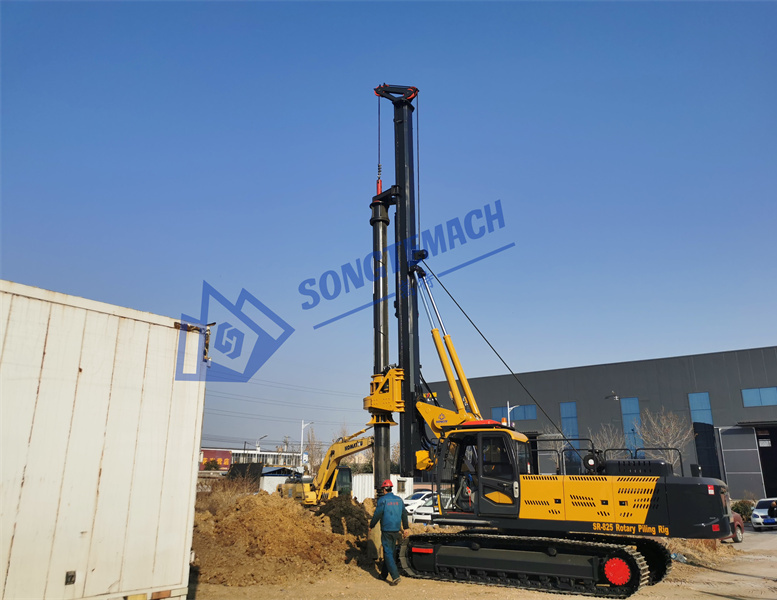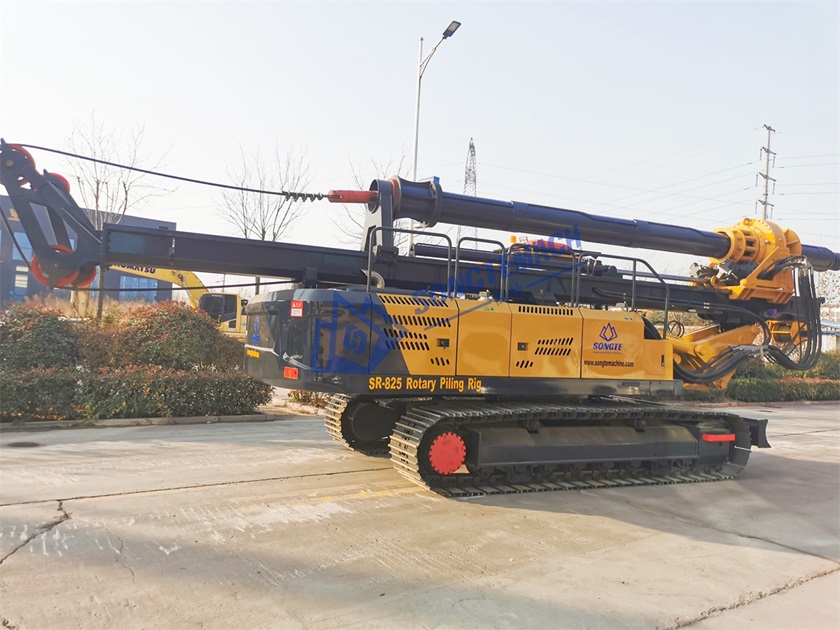Le principe de fonctionnement de la foreuse à pieux rotatifs dans la construction de fondations sur pieux
Abstrait
La foreuse de pieux rotatifs joue un rôle essentiel dans la construction moderne, en particulier dans les projets de fondations sur pieux tels que les pieux coulés sur place. Ces plates-formes sont polyvalentes et efficaces, capable de fonctionner dans diverses conditions géologiques. Cet article explore le principe de fonctionnement des foreuses rotatives, détaillant leurs composants, Mécanismes opérationnels, et les types de construction de fondations sur pieux qu’elles soutiennent.
Introduction à la foreuse de pieux
Les foreuses rotatives sont essentielles dans le domaine du génie civil, Spécialement pour la construction de fondations sur pieux. Ils sont largement utilisés dans la construction municipale, Autoroutes, Ponts, et immeubles de grande hauteur. Cet article vise à fournir un aperçu complet des principes de fonctionnement de ces plates-formes, en mettant l’accent sur leur application dans la construction de pieux coulés sur place et d’autres méthodes de fondation sur pieux.
Composants de la foreuse de pieux rotatifs
Structure de l’engin de forage
- Porte-bagages de base: Généralement une base montée sur chenille ou sur camion qui offre stabilité et mobilité.
- Mât: Structure verticale supportant l’appareil de forage et alignant le train de tiges.
- Entraînement rotatif: Une unité motorisée qui fournit une force de rotation au train de tiges et aux outils de forage qui y sont attachés.
- Barre Kelly: Un tuyau d’acier télescopique qui transfère les forces de rotation et verticales à l’outil de forage.
- Outil de perçage: Différents types sont utilisés en fonction des conditions du sol, y compris les vis courtes, Godets rotatifs, et carottiers.
Systèmes auxiliaires
- Système hydraulique: Alimente le mouvement et le fonctionnement du mât, Entraînement rotatif, et d’autres composants.
- Système de contrôle: Gère le fonctionnement de l’engin de forage, souvent avec des commandes électroniques avancées pour plus de précision.
- Système de refroidissement: Garantit que les fluides hydrauliques et autres composants ne surchauffent pas pendant le fonctionnement.
Mécanisme opérationnel
Processus de forage d’une plate-forme de pieux
- Configuration et alignement: L’engin de forage est positionné sur le site de forage, et le mât est aligné verticalement.
- Sélection d’outils: En fonction des conditions du sol ou de la roche, Un outil de forage approprié est choisi.
- Opérations de forage: L’entraînement rotatif fait tourner la barre Kelly et l’outil de perçage attaché. L’outil coupe le sol ou la roche, Création d’un trou de forage.
- Perçage à sec: Les tarières courtes sont utilisées pour les sols cohésifs.
- Perçage humide: Les godets rotatifs sont utilisés dans les sols aquifères ou meubles.
- Forage de roche: Les carottiers sont utilisés pour forer à travers les couches de roche dure.
- Enlèvement des déblais: Les déblais sont ramenés à la surface par l’action rotative de l’outil de forage et sont retirés du trou de forage.
Techniques de forage
- Tarière à vol continu (CFA): Utilisé pour créer des pieux de fondation profonds sans qu’il soit nécessaire de retirer la tarière jusqu’à ce que le tas soit formé.
- Forage Kelly: La barre Kelly est allongée et rétractée pour atteindre des profondeurs de forage plus profondes, Généralement utilisé pour les pieux de plus grand diamètre.
Placement du béton
Dans la construction de pieux coulés sur place, une fois le forage foré à la profondeur souhaitée, Une cage de renfort est placée, et le béton est coulé directement dans le trou de forage, Formation d’un tas solide in situ.
Machine de battage rotative hydraulique pour pieux forés 25m SR-825

Types de construction de fondations sur pieux
Pieux coulés sur place
- Méthode: Le forage est effectué à la profondeur requise, Une cage de renfort en acier est insérée, et le béton est coulé en place.
- Avantages: Fournit une résistance solide, Pieux porteurs avec une excellente adhérence au sol environnant.
Pieux préfabriqués
- Méthode: Les pieux en béton préfabriqué sont enfoncés dans le sol à l’aide de la foreuse rotative comme outil auxiliaire.
- Avantages: Réduit le temps de construction et offre un contrôle de haute qualité de la production de pieux.
Applications de foreuse de pieux
Les foreuses rotatives sont utilisées dans divers scénarios de construction, y compris:
- Développement urbain: Pour les immeubles de grande hauteur où des pieux de fondation profonds sont essentiels.
- Projets d’infrastructure: Comme les autoroutes et les ponts nécessitant des fondations stables.
- Structures riveraines: Là où les pieux doivent être enfoncés à travers des sols meubles et des couches aquifères.
Conclusion
Les foreuses à pieux rotatifs sont des outils indispensables dans la construction moderne, offrant la polyvalence et l’efficacité nécessaires à divers projets de fondations sur pieux. Comprendre leurs principes de fonctionnement, Composants, et les mécanismes opérationnels est crucial pour optimiser leur utilisation dans différentes conditions géologiques. À mesure que la technologie progresse, Ces plates-formes continueront d’évoluer, offrant une précision et une capacité encore plus grandes dans l’ingénierie des fondations.
Références
- Tomlinson, M.J., & Woodward, J. (2015). Conception de pieux et pratique de construction. CRC Presse.
- Cernica, J.N. (1994). Génie géotechnique: Conception de la fondation. John Wiley & Fils.
- Bowles, J.E. (1996). Analyse et conception des fondations. McGraw-Hill.
- Spécifications et manuel d’utilisation de la foreuse rotative Songte.
Plus de liens:
Comment fonctionne la machine à pieux rotative, Vidéo ici!
Fabricant de machines de battage, Plus de modèles d’appareils de forage rotatifs
Foreuses rotatives: La solution ultime pour la construction de fondations sur pieux
 Songtemachine
Songtemachine

